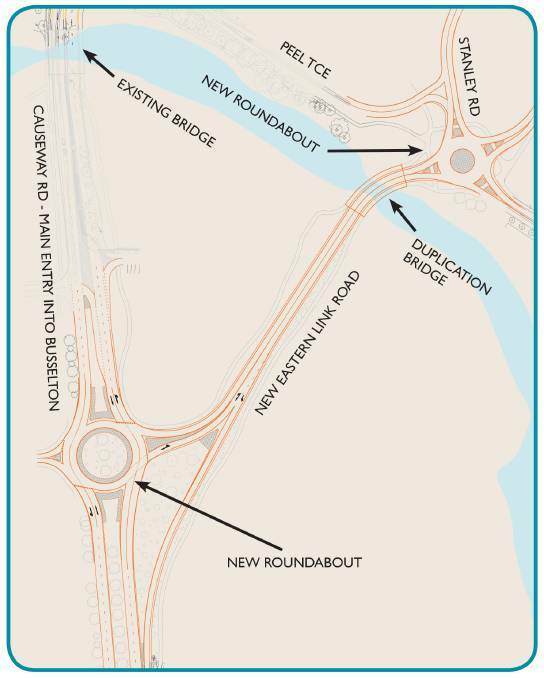
An appeal lodged under the Environmental Protection Act against the Eastern Link development in Busselton was dismissed by the Environment Minister Stephen Dawson.
Create a free account to read this article
$0/
(min cost $0)
or signup to continue reading
Port Geographe residents Jeff Falcolner and Paul Vines lodged the appeal to object a decision made by the Environmental Protection Agency that it would not assess a proposal from the City of Busselton.
The city have proposed constructing the Eastern Link to connect Causeway Road and Peel Terrace via a bridge across the Vasse River to help reduce traffic congestion in the town centre.
The infrastructure requires the removal of seven mature peppermint trees, which form part of a larger canopy of trees that are home to the critically endangered western ringtail possum.
In his determination, Mr Dawson said the EPA noted the impacts to the western ringtail possum could be considered under separate statutory processes, without their need to conduct an environmental impact assessment.
Mr Dawson acknowledged the decline in western ringtail possum numbers could be attributed to clearing of their preferred habitat - peppermint trees – among other factors.
He noted the proposal required careful evaluation because mature peppermint trees should be retained where ever possible.
He was confident this would be done through the Department of Water and Environmental Regulation’s assessment of a clearing permit for the proposal.
“DWER is required to consider the clearing principles, which include the principle that native vegetation should not be cleared if it compromises part or whole of, or is necessary for the maintenance of, a significant habitat for fauna indigenous to the state.”
Mr Dawson also noted that the impacts to the western ringtail possum also required approval under the federal government’s Environment Protection and Biodiversity Conservation Act 1999.
It was noted the minister viewed there were other alternative mechanisms to assess the impacts and if they were found to be unacceptable then the proposal would be open to refusal.
Mr Falcolner, who lodged the appeal, said it seemed the minister was passing the buck and showed a lack of willingness to say no to the Eastern Link proposal.
“Not because there was any doubt that the Eastern Link would cause even further loss of habitat and unnecessary further splitting up of the very much needed canopy and environment,” he said.
“But leaving the right and proper decision to be made by someone else.
“The appeals were dismissed as the impacts could be considered under separate (other) statutory processes.”
Mr Falcolner said clearing and further disruption to the environment would undoubtedly lead to western ringtail possum’s deaths and further hasten their extinction as a species.
He said the Threatened Species Scientific Committee found the population of possums was 3400 in 2015 and had declined by 80 per cent since 2006.
“This significant decline has been attributed to a number of factors including land clearing,” he said.
“Guess who is allowing and even encouraging tree removal to happen and to expand residential areas and facilities in this life threatening way to indigenous wildlife?”
The Eastern Link proposal has copped opposition from parts of the community with former City of Busselton mayor Ian Stubbs labeling the development “environmental vandalism.”
The proposal was developed by the city in conjunction with consultants who undertook extensive modelling to look at the best ways to reduce traffic congestion into Busselton’s central business district.
It formed part of the Busselton Traffic Study, which was completed in August 2015 to identify various road upgrades over the short, medium and long-term with some projects marked for 20 years time.
As part of the study an option to extend Ford Road to the Bussell Highway was identified as a long term project which could be achieved in 15 to 20 years time, and has strong support from parts of the community.
Ford Road would provide an alternative route in and out of East Busselton without using Causeway Road, it has twice been rejected in the past by the Environmental Protection Authority.
It would run alongside RAMSAR listed wetlands, recognised internationally for its biological diversity, abundant wildlife and flora.
To address community concerns the city are currently undertaking more public consultation to gauge the level of support identified in the Busselton Traffic Study.
As part of the consultation process, two community forums were held this week to give resident’s more insight into the study.
A public survey is also being undertaken, if you would like to have your say and take part in a survey please visit the city’s website yoursay.busselton.wa.gov.au/busseltontraffic.

